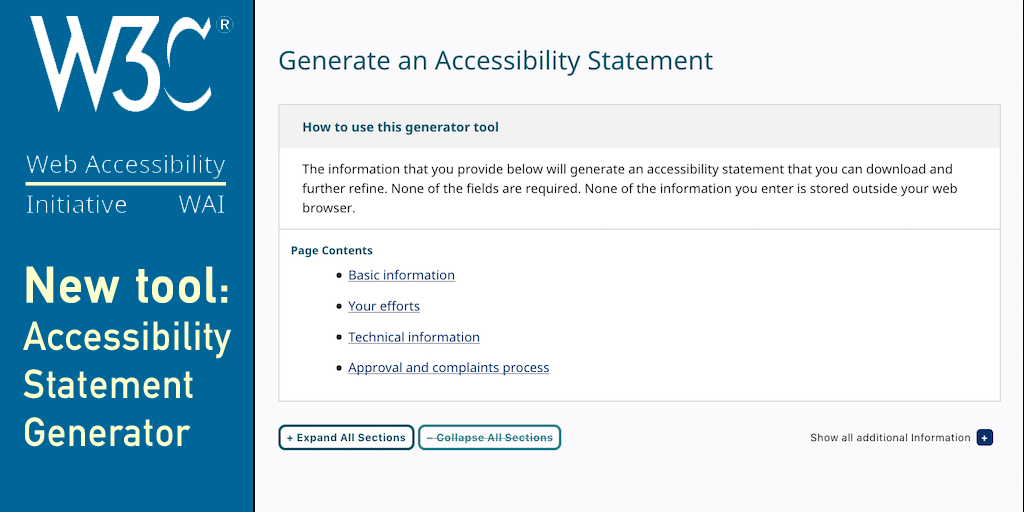How to Create Accessibility Statements
Accessibility statements inform users about the accessibility of your website, mobile application, and other digital content. They demonstrate your commitment to accessibility, and to the inclusion of people with disabilities. They can be as simple as briefly outlining that commitment and providing information on how users can get help, should they encounter difficulty in using your content.
Ideally, accessibility statements also describe the considerations that you have applied to ensure accessibility, and any limitations that you may be aware of. For example, which web browsers and assistive technologies you have tested your website with for compatibility. Such information can help users understand the cause of issues they may be observing without needing to contact you.
Developing an Accessibility Statement provides guidance, a free generator tool, and examples, to help you create accessibility statements. It helps you to collect and enter some of the relevant information to create an accessibility statement for your particular content and in your particular situation. For example, your organizational or national policy might require you to provide certain type of information.
None of the information you enter in the W3C accessibility statements generator tool is stored outside your browser. W3C is committed to privacy and protection of your data. Also, none of the information is required by the generator tool. Once you are happy with the generated accessibility statement, you can download it as HTML code, and further customize it. For example, you can edit the wording, change the styling, and embed the HTML code in a web page.
If that is not enough customization, you can download the source code for the entire resource and create a custom version. For example, under the EU Web Accessibility Directive, public bodies are required to provide accessibility statements with specific information. Member states could reuse this code to create a customized generator tool for their particular national laws and policies.
This resource was created by the Education and Outreach Working Group (EOWG) of the W3C Web Accessibility Initiative (WAI), with support from the EC-funded WAI-Tools Project (EC Grant 780057).

Very interesting. Will take this tool for a spin & create a statement for my website. Thanks for this amazing resource
I guess whether there is an "accessibility statement" or not, every website should consider under-going these to make sure user experience is respected. And major search engines should support this initiative by making is a SEO point to virtually enforcing this